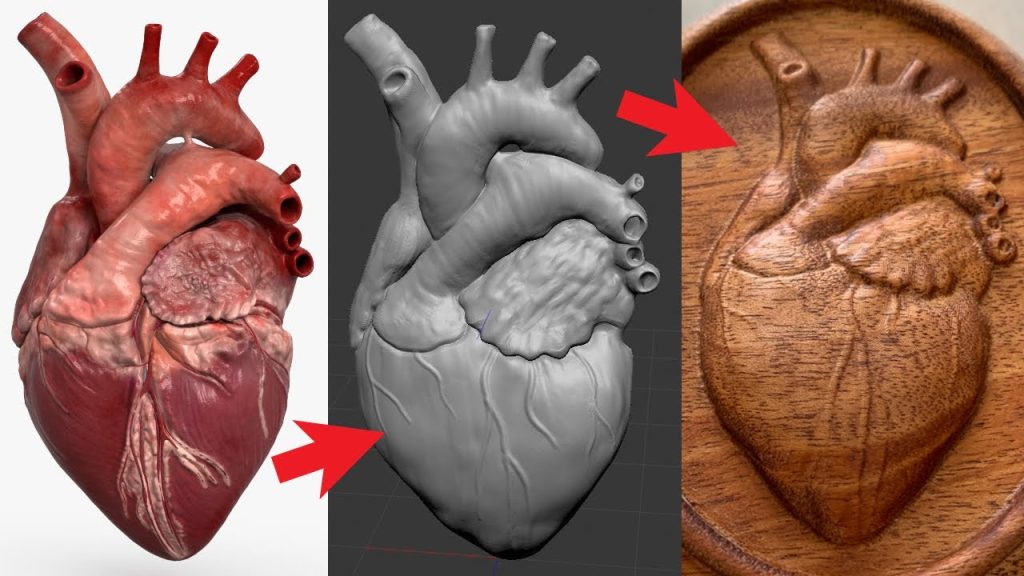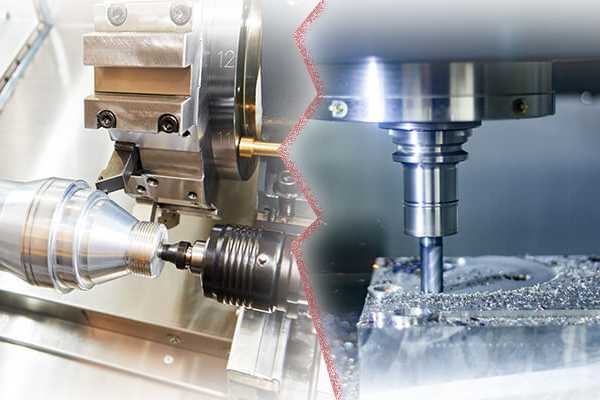Table of Contents
CNC turning is an advanced manufacturing process that has revolutionized the way parts and components are made. It uses computer-controlled machines to shape and cut metal and other materials with precision and accuracy.
With CNC turning, complex shapes and intricate designs can be created with ease, making it a popular choice in various industries such as aerospace, automotive, and medical. In this article, we will take a closer look at what CNC turning is, how it works, and its applications in modern manufacturing.
What is CNC Turning?
CNC turning is a manufacturing process that involves the use of computer-controlled machines to produce precise and complex parts. This process is used to create a wide range of products, including automotive parts, medical equipment, aerospace components, and more.
How does CNC Turning Work?
CNC turning machines use a computer-controlled lathe to shape and cut materials into specific shapes and sizes. The machine is equipped with a cutting tool that rotates at high speeds and removes material from the workpiece. The cutting tool is guided by a computer program that controls the movement of the tool and the speed at which it cuts.
The process begins with a solid block of material, which is mounted onto the machine’s spindle. The cutting tool then moves along the surface of the material, cutting away small pieces to create the desired shape. The finished part is then removed from the machine and inspected for quality.
The Benefits of CNC Turning
CNC turning offers a number of benefits over traditional manufacturing methods. One of the biggest advantages is precision. Because the cutting tool is guided by a computer program, the finished product is much more accurate and consistent than parts made by hand. CNC turning also allows for faster production times and lower production costs, since the machines can run continuously without the need for human intervention.
Another benefit of CNC turning is the ability to create complex shapes and designs. Because the cutting tool can move in multiple directions, it is possible to create intricate shapes that would be impossible to make by hand. This makes CNC turning an ideal process for creating parts with complex geometries, intricate details, or tight tolerances.
CNC Turning vs. Traditional Turning
The main difference between CNC turning and traditional turning is the level of automation. Traditional turning requires a skilled operator to manually guide the cutting tool along the surface of the material. This process is time-consuming and can be prone to errors. CNC turning, on the other hand, is fully automated and requires minimal human intervention. This makes it faster and more efficient than traditional turning, and also reduces the risk of errors and defects.
Another advantage of CNC turning over traditional turning is the ability to create complex shapes and designs. Traditional turning is limited to simple shapes and requires multiple setups to create more complex parts. CNC turning, on the other hand, can create complex shapes in a single setup, making it ideal for parts with intricate geometries or tight tolerances.
Applications of CNC Turning
CNC turning is a versatile process that can be used to create a wide range of parts and components. Some common applications include:
– Automotive parts: CNC turning is used to create a variety of parts for cars and trucks, including engine components, suspension parts, and more.
– Medical equipment: CNC turning is used to create precision parts for medical devices such as surgical instruments, implants, and diagnostic tools.
– Aerospace components: CNC turning is used to create parts for airplanes, rockets, and satellites, including engine components, landing gear, and more.
– Industrial machinery: CNC turning is used to create parts for a variety of industrial machinery, including pumps, valves, and hydraulic systems.
Conclusion
CNC turning is a powerful and versatile manufacturing process that offers a number of benefits over traditional manufacturing methods. By using computer-controlled machines to create precise and complex parts, CNC turning allows for faster production times, lower costs, and greater flexibility in design. Whether you’re creating automotive parts, medical equipment, or aerospace components, CNC turning is an ideal solution for your manufacturing needs.
Freequently Asked Questions
What is CNC Turning?
CNC turning is a manufacturing process that involves the use of a computer-controlled machine to remove material from a workpiece. The process is used to create cylindrical parts with a high degree of accuracy and precision. The machine is programmed to move a cutting tool along the surface of the workpiece to remove material and create the desired shape. The process is commonly used in the production of parts for industries such as aerospace, automotive, and medical.
The CNC turning process is highly automated, which means that it requires minimal human intervention. The machine is programmed to perform a series of operations, including cutting, drilling, and threading. This makes the process faster and more efficient than traditional manual methods. Additionally, the use of computer-controlled machines ensures that the final product is consistent and of high quality.
What are the advantages of CNC Turning?
CNC turning offers several advantages over traditional manufacturing methods. One of the most significant advantages is its high degree of accuracy and precision. The use of computer-controlled machines ensures that the final product is consistent and of high quality. Additionally, the process is highly automated, which means that it requires minimal human intervention. This makes it faster and more efficient than traditional manual methods.
Another advantage of CNC turning is its flexibility. The machine can be programmed to produce a wide range of parts, which makes it ideal for small or large production runs. This makes it ideal for industries such as aerospace and automotive, where parts need to be produced in large quantities.
What materials can be used in CNC Turning?
CNC turning can be used with a wide range of materials, including metals, plastics, and wood. The process is particularly well-suited to the production of cylindrical parts made from materials such as aluminum, brass, and steel. The machine can also be used to produce parts made from more exotic materials such as titanium and nickel alloys.
The choice of material will depend on the specific requirements of the part being produced. For example, if the part needs to be lightweight, aluminum may be the best choice. If the part needs to be strong and durable, steel may be a better option. The material will also affect the cutting speed and feed rate of the machine, so it is important to choose the right material for the job.
What is the difference between CNC Turning and CNC Milling?
CNC turning and CNC milling are two different manufacturing processes. CNC turning involves the use of a computer-controlled machine to remove material from a cylindrical workpiece, while CNC milling involves the use of a machine to remove material from a flat workpiece. The two processes are often used together to produce complex parts with different shapes and sizes.
Another difference between the two processes is the type of cutting tool used. In CNC turning, a single-point cutting tool is used to remove material from the workpiece. In CNC milling, a multi-point cutting tool is used to remove material from the workpiece. This allows for the production of more complex shapes and features.
What are the applications of CNC Turning?
CNC turning has a wide range of applications across several industries. It is commonly used in the production of parts for the aerospace, automotive, and medical industries. The process is particularly well-suited to the production of cylindrical parts with a high degree of accuracy and precision.
Some of the specific applications of CNC turning include the production of engine components, hydraulic and pneumatic components, and parts for the defense and aerospace industries. The process can also be used to produce parts for the medical industry, such as surgical implants and prosthetics. Its flexibility and precision make it ideal for a wide range of applications.
In conclusion, CNC turning is a highly advanced and precise method of creating complex parts and components. With the use of computer-controlled machines, manufacturers can achieve a level of accuracy and consistency that would be impossible with manual methods. This technology has revolutionized the manufacturing industry, making it faster, more efficient, and more cost-effective.
While CNC turning has its advantages, it also requires a skilled operator who can program and operate the machines. This means that there is a demand for trained professionals in this field, and it can be a lucrative career path for those who enjoy working with technology and machinery.
Overall, CNC turning is an essential part of modern manufacturing and will continue to play a significant role in the industry’s growth and development. As technology advances and machines become even more sophisticated, we can expect to see even greater precision and efficiency in the years to come.
Request a quote today!
[contact-form-7 id="1578" title="Contact form"]
Please compress the file into a ZIP or RAR file before uploading. Alternatively, send through your RFQ by email.
enquires@unitymanufacture.com





